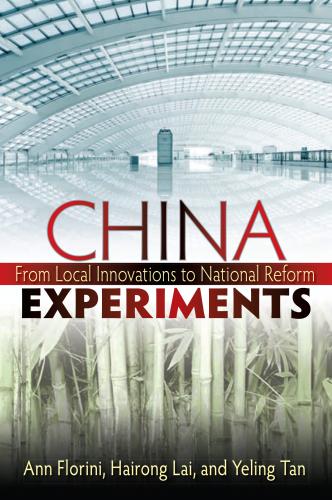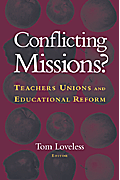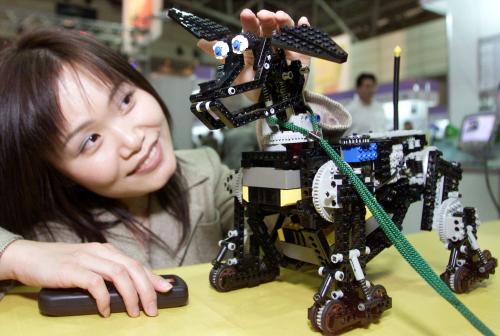Recently, the White House hosted a Symposium on the Future of Education R&D and Digital Learning, at which 100 or so researchers came together to share with and learn from each other. The purpose of this meeting was twofold—first, to review progress made in supporting educational innovation by the outgoing administration, and second, to consider what research and development path forward would support an effective education for each and every K-12 student in America.
One of the ideas that was discussed was the possibility of an Advanced Research Projects Agency for Education (ARPA-Ed). Far from being a new idea (this was actually proposed in the President’s FY2012 budget), or even a controversial one (several have written about the need, support, and workable structure for an ARPA-Ed), here I consider why this hasn’t actually happened to date and what it would truly take to apply the DARPA (Defense Advanced Research Projects Agency) research and development model to educational innovations, like personalized learning.
What makes DARPA unique?
In short, DARPA is a very well-funded, highly flexible, research and development agency that was created to minimize the red tape that usually slowed defense R&D, while simultaneously maximizing innovation and results. Beyond its funding, which is approximately 377 times greater than the national educational research budget in 2016, DARPA operates under the following unique design principles, outlined in detail at a 2012 national education R&D meeting:
- Risk: DARPA can take bigger risks than more traditional federally funded R&D projects.
- Flexible projects: DARPA can choose to fund partial proposals, or projects solely focused on brainstorming or “mindstorming” a problem. In addition, it can fund possible solutions to problems across proposals.
- Flexible partnerships: DARPA can work with or fund whichever entities it chooses, including private, for-profit, entities, and it can put partners together for projects (including across multiple sectors) that may or may not have applied for funding as partners to begin with.
- Flexible solutions: DARPA can also fund purchase orders for solutions or products that do not yet exist, and can fund “performance-based” contracts that allow their grantees to retain intellectual property and other proprietary rights to profit after their contractual obligations with DARPA are complete.
- Flexible timelines: Finally, DARPA can defund, increase funding, or extend project funding at almost any time, and for almost any reason. This allows funding to be quickly ramped up when successes are discovered, and ramped down when projects don’t pan out, taking some of the risk out of very risky bets.
How would this apply to education?
Aspects of what an ARPA-Ed would look like or do are still vague, but the general idea would be to fashion a few “grand challenges” and then using DARPA design principles outlined above, fund projects that would generate solutions to these challenges. Some examples of challenges might include, “Design a mastery-based learning system for all students,” or “Develop assessments that truly measure learning.” As you can see, the challenges would be sticky, complex problems that education has grappled with for a long time, and the premise is that by dedicating adequate funding and relaxing some of the traditional restrictions placed on R&D, solutions can and will be found. There is some debate about the need to get these grand challenges “right,” but the DARPA experience suggests that new challenges will arise as old ones are tackled, and starting somewhere is better than not starting at all.
What’s stopping us?
The two most cited reasons for ARPA-Ed’s nonexistence to date are that we don’t have the money, or the problems are too hard. I am willing to set both of these arguments aside. For one, I believe that the money is available, as more private funders turn attention to education and are willing to enter into novel funding agreements like public-private partnerships, performance-based grants, social impact bonds, etc. Further, even if there truly are no solutions to some of these sticky problems, I believe that we can, and should, do better; failing to succeed itself will provide lessons that can help many students along the way even if the ultimate goals are elusive.
The challenges to implementing ARPA-Ed can be broadly categorized as perspective problems. In general, I think we need to dramatically shift how we think about and conduct R&D in education in order for an ARPA-Ed to work.
In my opinion, these required shifts include:
- Mindset: current education research is a theoretical and very academic affair. I think we need to start viewing education research as being in service of educational design. Beyond the goals of research, we need a shift to a growth mindset when conducting research. Current problems like publication bias and low replicability in the social sciences stem from a fixed mindset and the belief that statistically non-significant findings are a “failure” of research. We need to understand that something is learned from every study, even those with a null result, and we need to take all of those lessons and apply them to the implementation problems at hand.
- Global vs. local concerns: education R&D (and education, broadly) is highly fragmented. An ARPA-Ed would need a clear, explicit client in mind for each of the grand challenges it seeks to solve. Further, consumers of these solutions (whether those who publish and read reports about results; or those who seek to implement solutions) also need to understand that there may exist global solutions to local or localized problems. The challenges themselves will be quite global, but we still need to see ourselves in the problems and solutions if those solutions are to be of any use to students in the future. ARPA-Ed can do this by carefully selecting the grand challenges, and facilitating flexible partnerships, solutions, and dissemination.
- People vs. products: from my perspective, we need to consider the extent to which models for solving “physical” (infrastructural, product, material) challenges can be successfully applied to social challenges. We need to seek examples and models in which this approach has worked for social interventions. Anecdotally, DARPA has been successful in the social or behavioral sphere as well, with finding solutions to problems like scaling therapies for sufferers of PTSD, or reducing the required time for military recruits to gain necessary skills. We need to understand where working models from one sector can reasonably be applied to education (or be willing to learn in a big, expensive way when models can’t be applied).
- Process vs. outcome: are timelines flexible when it comes to learning? If learning is conceptualized as an “outcome,” then no, timelines are not flexible. However, if we view learning as a process (that can, in fact, be lifelong), then students are not “left behind,” or “falling through the cracks” as research and innovation is happening. The potential benefits here are twofold. First, the way we think about who our target “students” are will broaden—we will be able to serve those outside of traditional K-12 settings, including individuals who dropped out of school, non-traditional adults in college, individuals in the workforce, anyone who is seeking to develop skills. Second, we will be able to apply solutions, as they are identified, to all students—they will benefit from the solutions that are generated no matter how far along they are on the continuum of learning.
Let’s do this!
All of the challenges above are surmountable, and just because there are challenges doesn’t mean we can’t or shouldn’t do this. The fact is, innovation is happening in education and we have an opportunity right now to capitalize on that in a smart way—by supporting the R&D that allows us to learn quickly and move along a path of increasing improvement. Now is the time to learn from the DARPA model by shooting for the moon, in order to realize and sustain highly impactful innovations, even if we “fail” to solve the deeply complex underlying problems.








Commentary
ARPA-Ed: What would it take?
November 17, 2016